America's eeriest Gold Rush ghost towns
Gold Rush towns that time forgot
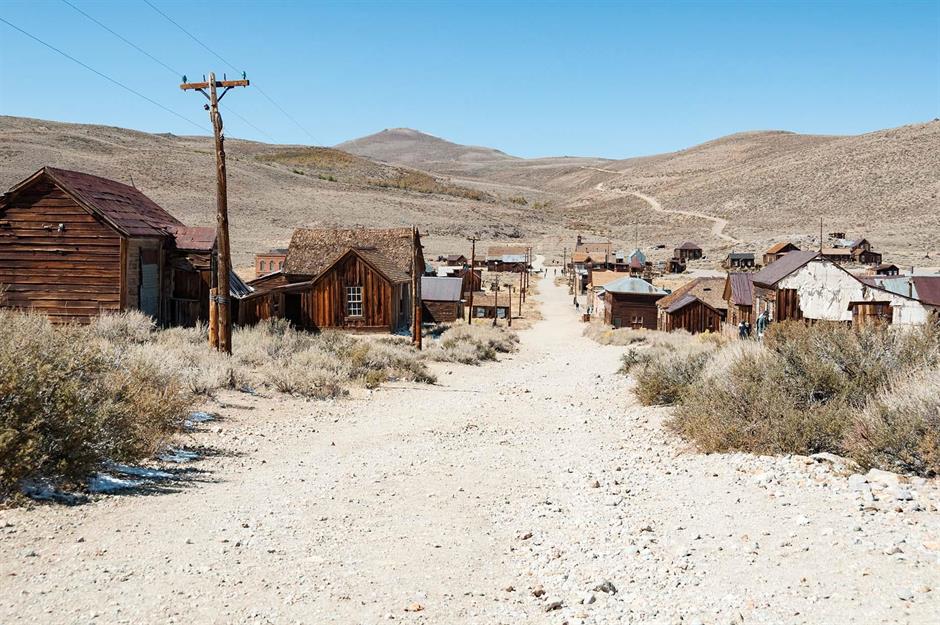
When gold was discovered in California in the 1850s, it triggered a rush west, with thousands of mining towns springing up across the American frontier. But when the riches ran out, most were quickly abandoned. Today, a few survive remarkably intact, offering a glimpse into a long-lost way of life.
Click through this gallery to discover America's eeriest Gold Rush ghost towns...
Virginia City, Montana
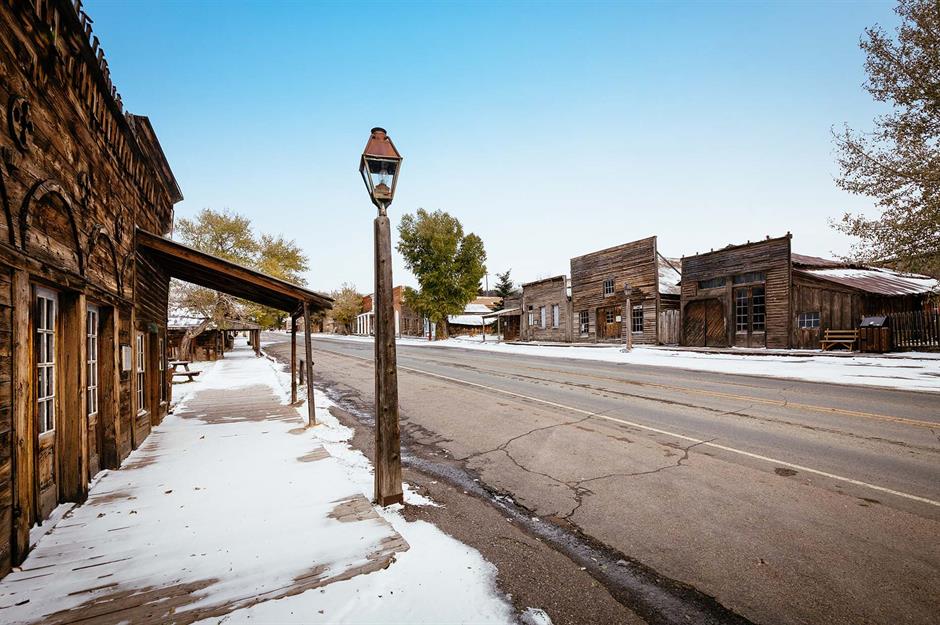
Best known as the former home of the famous frontierswoman Calamity Jane, this Gold Rush town blossomed in the 1860s as gold was discovered in the nearby Alder Gulch.
Virginia City, Montana
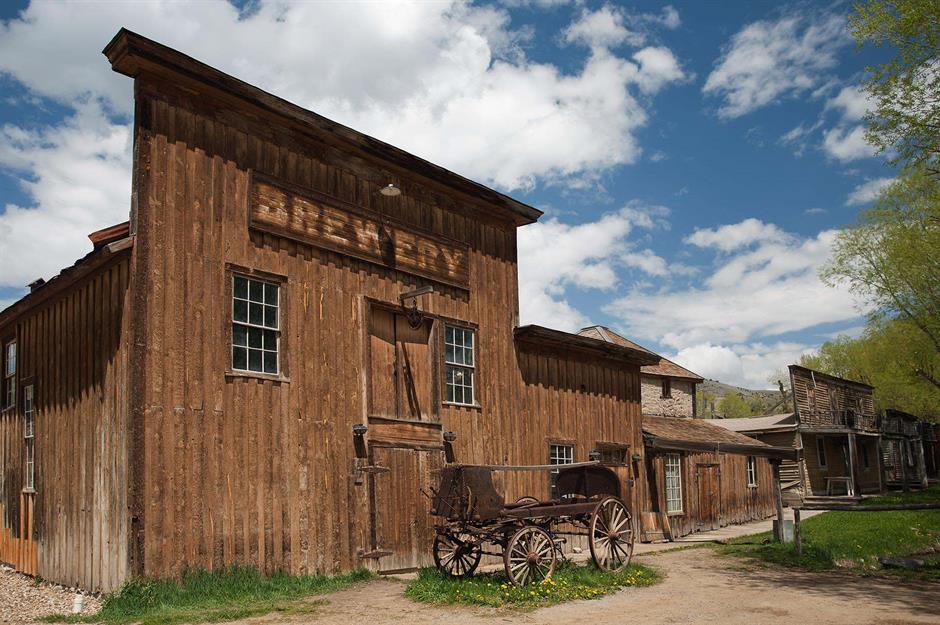
The remote town didn’t have law enforcement or a justice system for quite some time and, as a result, robberies and murder were the norm in this rough town. Gangs and outlaws, known as road agents, are thought to have killed around one hundred people between 1863 and 1864 alone.
Virginia City, Montana
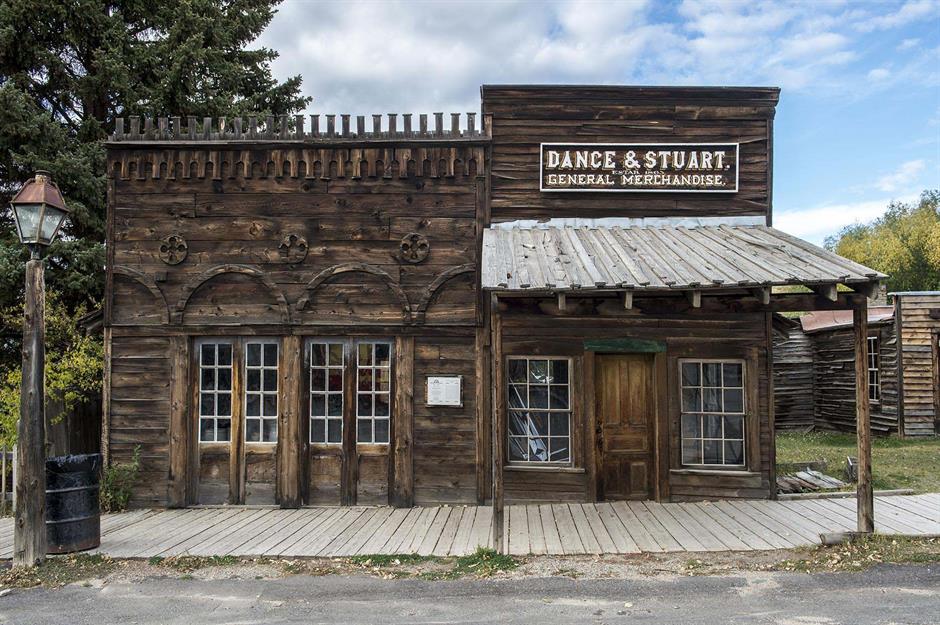
Today, Virginia City is a ghost town very much alive thanks to Charles and Sue Bovey, who bought the town bit by bit in the 1940s to restore and preserve its original buildings.
Nevada City, Montana

Just 1.5 miles from Virginia City lies another Gold Rush town turned museum. Bought by the Bovey family, who restored and preserved original buildings and their interiors between 1945 and 1978, the whole town is now a living museum.
Nevada City, Montana
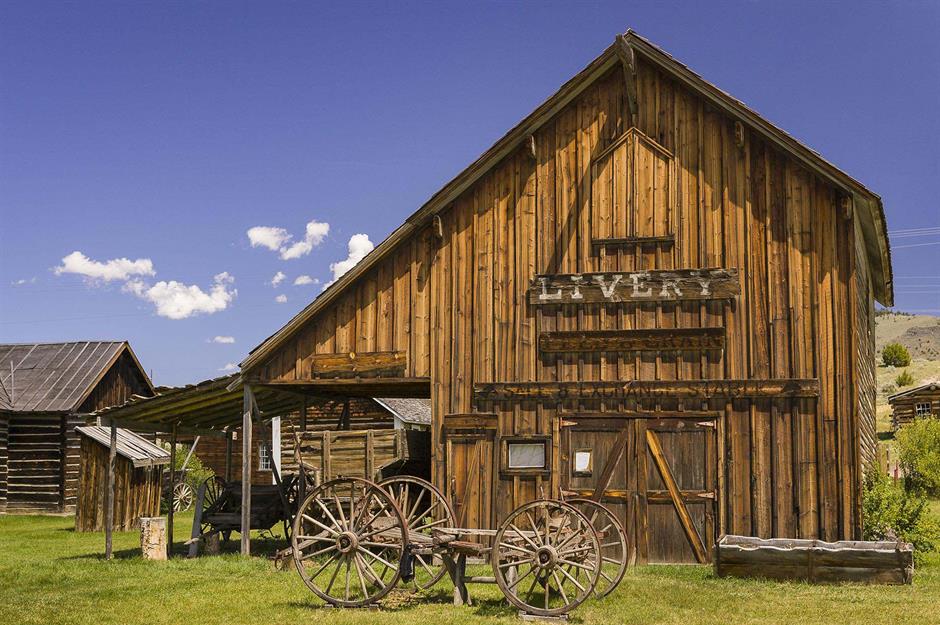
Together with Virginia City, both towns were a major center of commerce and were known as the Richest Gold Strikes in the Rocky Mountain West. Before the gold mining came to an end in 1922, it’s estimated that about $2.5 billion of gold was extracted in today’s market value.
Nevada City, Montana
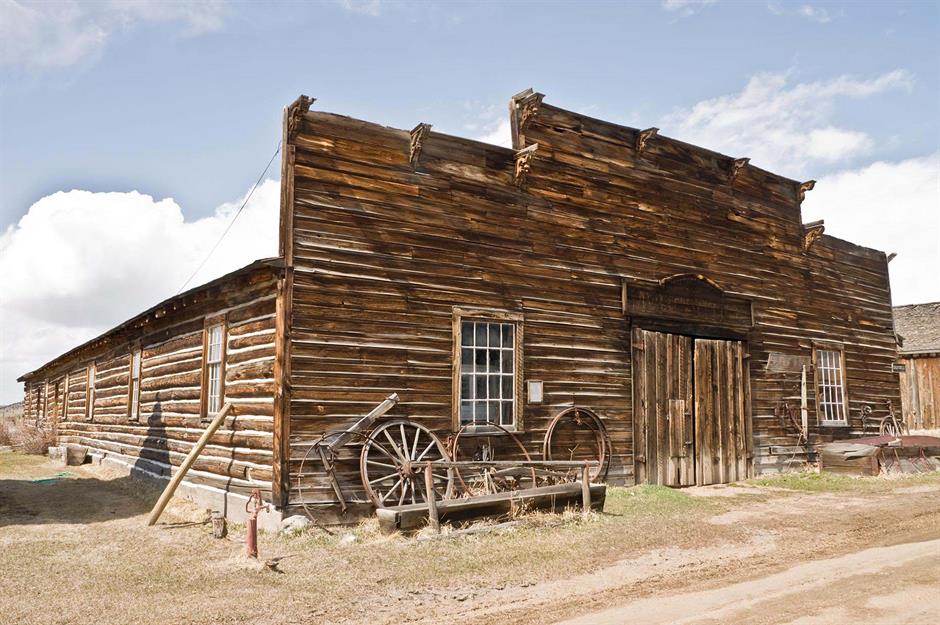
Today, a train connects both towns while live reenactments every weekend from Memorial Day weekend through Labor Day offer a glimpse into life in the Wild West in the 1800s.
Love this? Follow our Facebook page for more abandoned places and travel inspiration
Nelson, Nevada

A 45-minute drive into the desert south of Las Vegas lies Nelson. This abandoned gold mining town is now regularly used as a filming location and has become a popular roadside attraction. Founded in 1861 near the Eldorado Canyon Mine, the town was a tough, lawless place known for its violent residents.
Nelson, Nevada
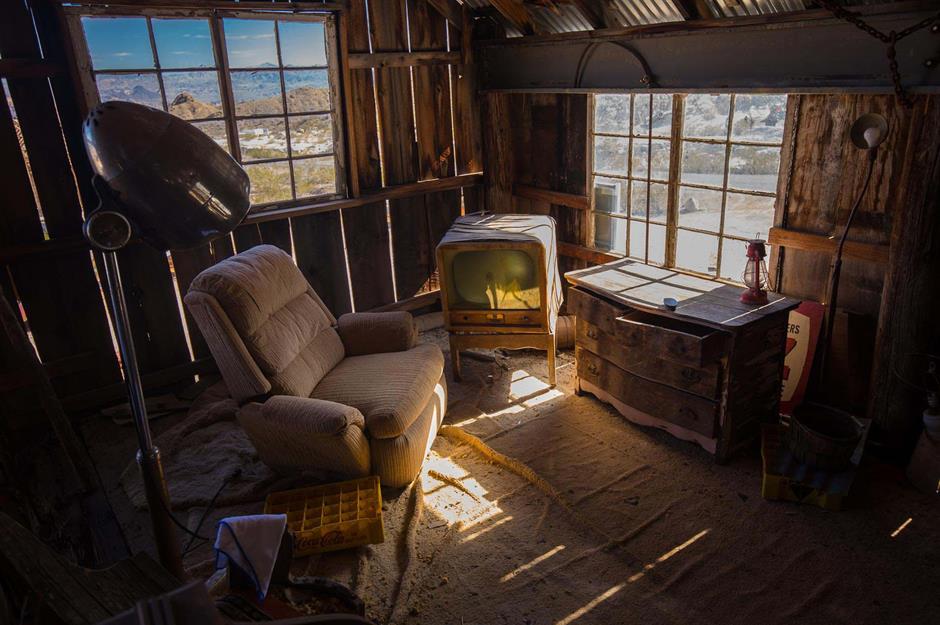
One of the first major gold mines in Nevada, it was at the epicenter of the Gold Rush. Gold, silver, and copper mining continued until the town was completely abandoned in the 1940s. Today, the wooden town is owned by the Werly family.
Nelson, Nevada

Old West buildings line the main street while more modern additions like mid-century oil signs and a 1950s-style gas station contribute to its peculiar appearance. There’s a mini museum and, if you’re brave enough, the family also provides guided tours through the Techatticup Mine tunnels, which extend deep into the surrounding hills.
Animas Forks, Colorado

Gold was first found in Animas Forks in 1873 and by 1876 there was a bustling community of prospectors living and working in the tiny village. The gold rush in Animas Forks did not last long and by the early 1900s many of the 500 or so residents had moved away, and the local newspaper had shut down.
Animas Forks, Colorado
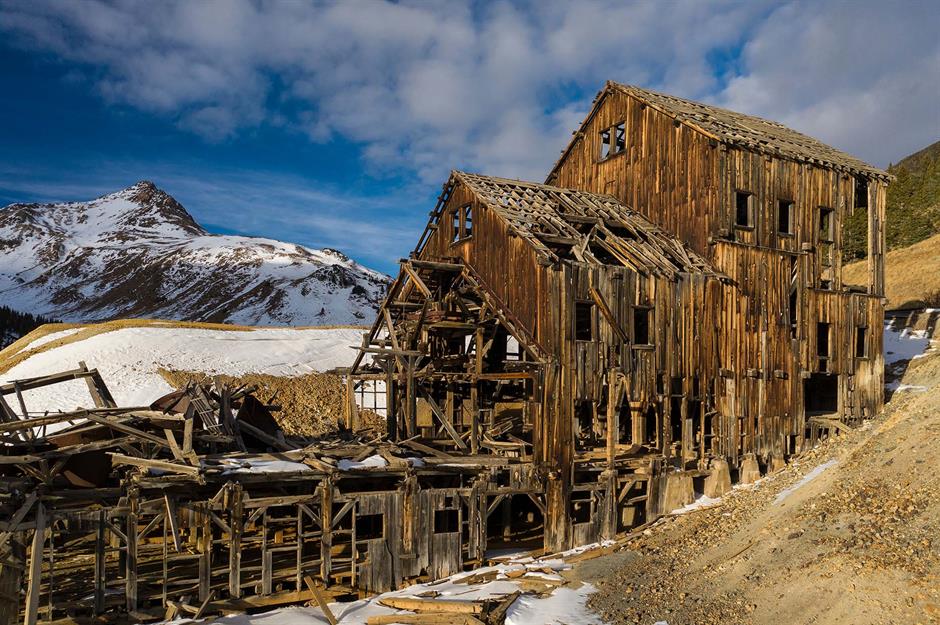
With no more gold left to prospect in the mountains, dealing with Colorado mountain winters suddenly became extremely unappealing and the town was swiftly abandoned. Today, visitors can explore the deserted village, including the gold processing plant, all of which is frozen in time.
Animas Forks, Colorado

Perhaps because of its isolation, Animas Forks has remained largely intact. Since 2011 the town has been listed on the National Register of Historic Places and the nine main buildings have been made safe for visitors to explore, but without compromising the look and feel of the Gold Rush ghost town.
St Elmo, Colorado
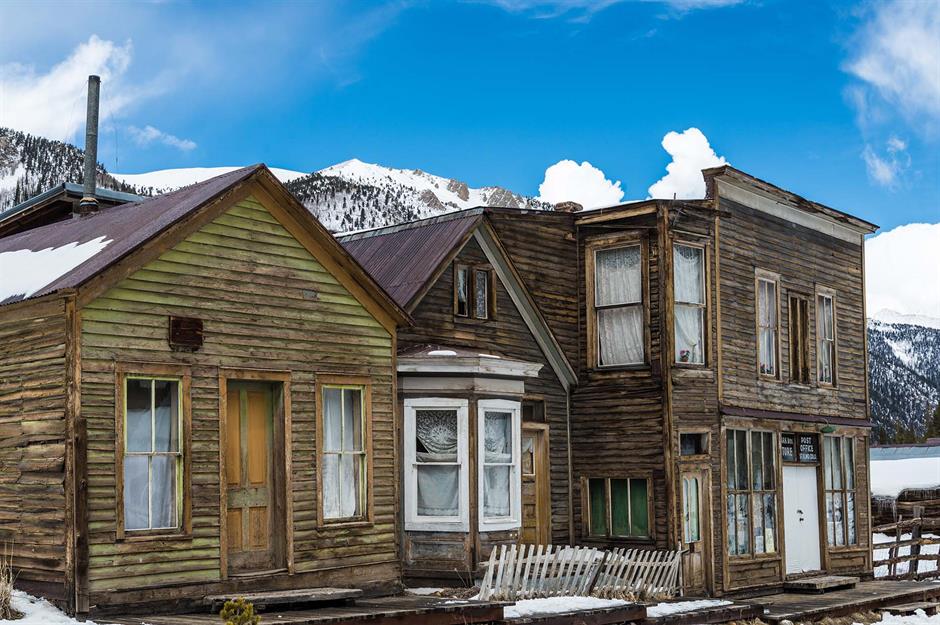
Originally named Forrest City, St Elmo lies in the heart of the Sawatch Range almost 10,000 feet above sea level. The town peaked in the 1890s when it had a telegraph office, town hall, five hotels, a number of saloons and dance halls, newspaper office, and a schoolhouse, but by 1922 the biggest mine had closed and the town was all but abandoned.
St Elmo, Colorado

Though it is considered a ghost town, a handful of residents still live among the old buildings and while it's not easy − there hasn’t been a post office since the St Elmo postmaster passed away in 1952 – the town still survives on travelers passing through or coming to explore the fascinating stories of the Gold Rush-era.
St Elmo, Colorado
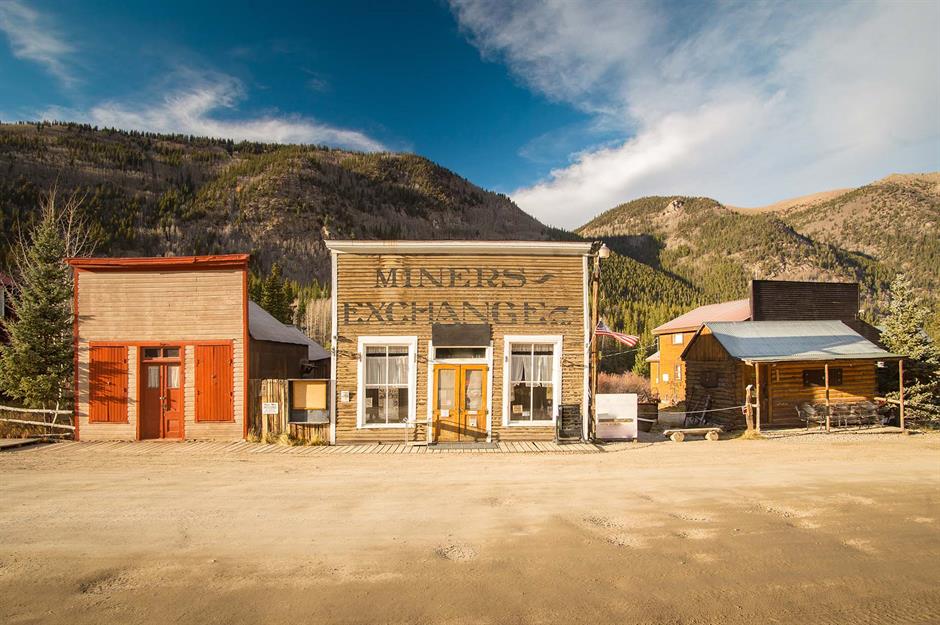
The old mining routes around St Elmo are now 4X4 adventure trails and daring visitors are treated to spectacular vistas of the Colorado mountains along the way. The general store is open between May and mid-October and many of the old mining buildings are still intact, making St Elmo one of the most photogenic ghost towns in the US.
Bannack, Montana
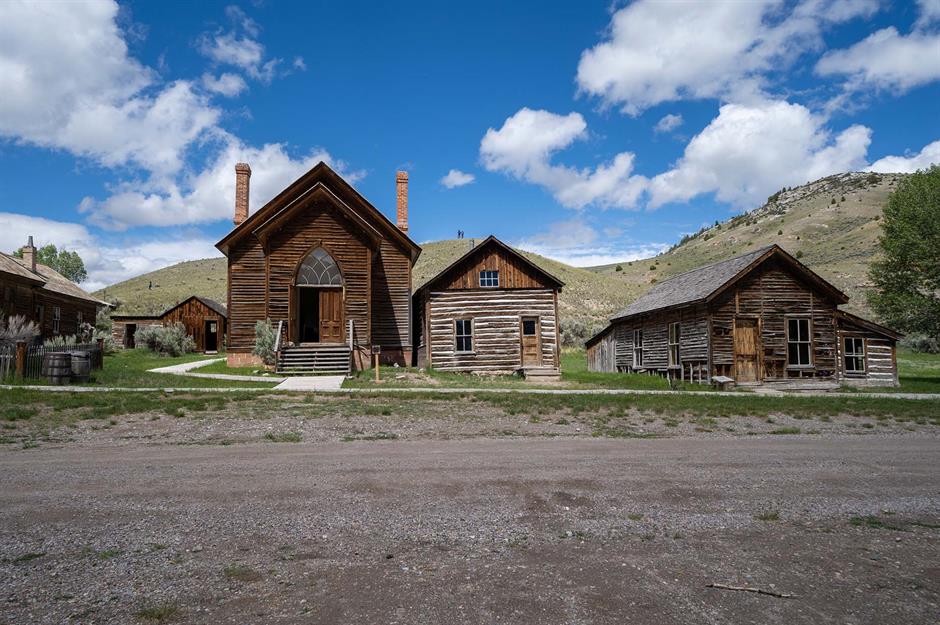
Bannack, Montana was once a thriving city after a significant gold discovery drew in prospectors in the early 1860s. It even served as the capital of the Montana Territories for a short while.
Home to over 10,000 inhabitants, it had three hotels, three bakeries, two meat shops, and a grocery store, so despite its extreme isolation, it was well served. It survived as a small mining community for almost one hundred years, when the last residents moved away, and Bannack became a ghost town.
Bannack, Montana

Today, over 50 historic log and frame buildings survive in what was once downtown Bannack. Every year on the third weekend of July, the Bannack Days festival is held in the ghost town, offering visitors a chance to experience life during the Gold Rush through live demonstrations and costumed re-enactors. Guests can even enjoy an old-fashioned breakfast at Hotel Meade, a former courthouse turned hotel and the most prominent surviving building in Bannack.
Bannack, Montana
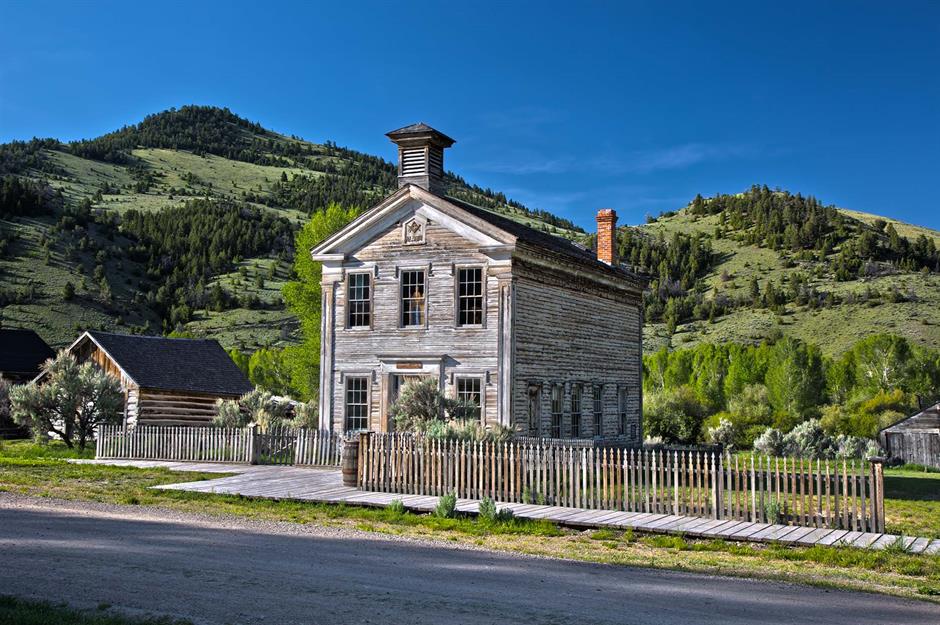
Bannack is one of the best-preserved Gold Rush towns in Montana so naturally it's also shrouded in mystery. There have been several reports of hauntings here over the years, especially in Hotel Meade, which used to serve as a courthouse and jail, so it’s a trip only for the brave.
Bodie, California
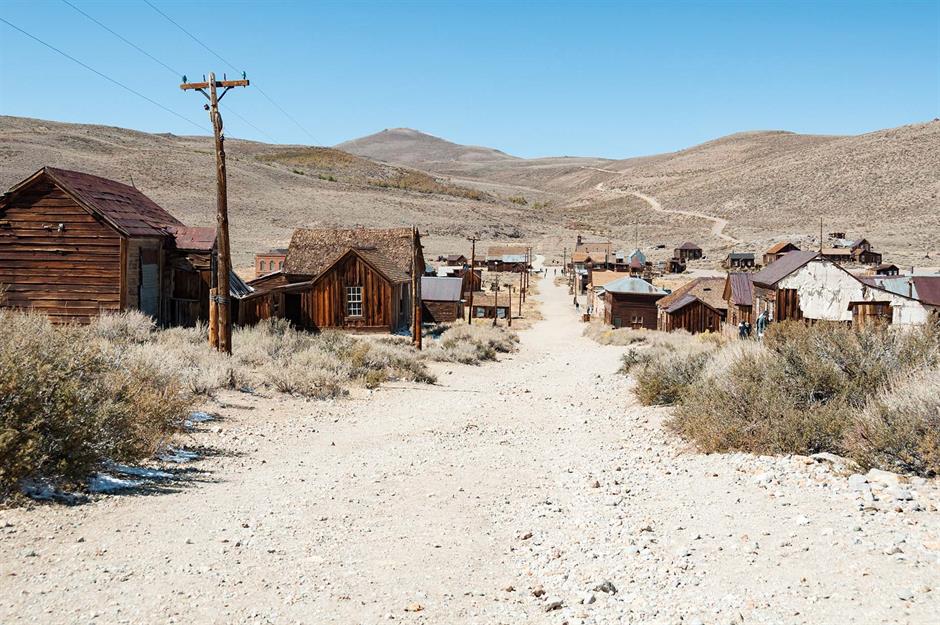
Perhaps the best-known Gold Rush ghost town in all of America, Bodie has attracted travelers and photographers for years. In its heyday, this California gold mining town had 10,000 inhabitants and 65 saloons, gambling halls, opium dens, and brothels. The frequent outbreaks of violence and murders earned Bodie the dubious reputation as the most lawless mining camp in the far west.
Bodie, California

Over time, the mines became too expensive to run and in 1932 a huge fire burned 90% of the town to the ground. The 200 buildings that remain are now preserved as ruins – tables are still laid with crockery and in the school books lie scattered on desks.
Bodie, California

Today, Bodie is part of the Bodie State Historic Park and peeking inside most houses, including the church, is off-limits. Typically, Bodie Foundation runs a variety of tours that allow visitors to explore and learn more about the town's history, including free history talks and stamp mill tours.
Kennecott, Alaska
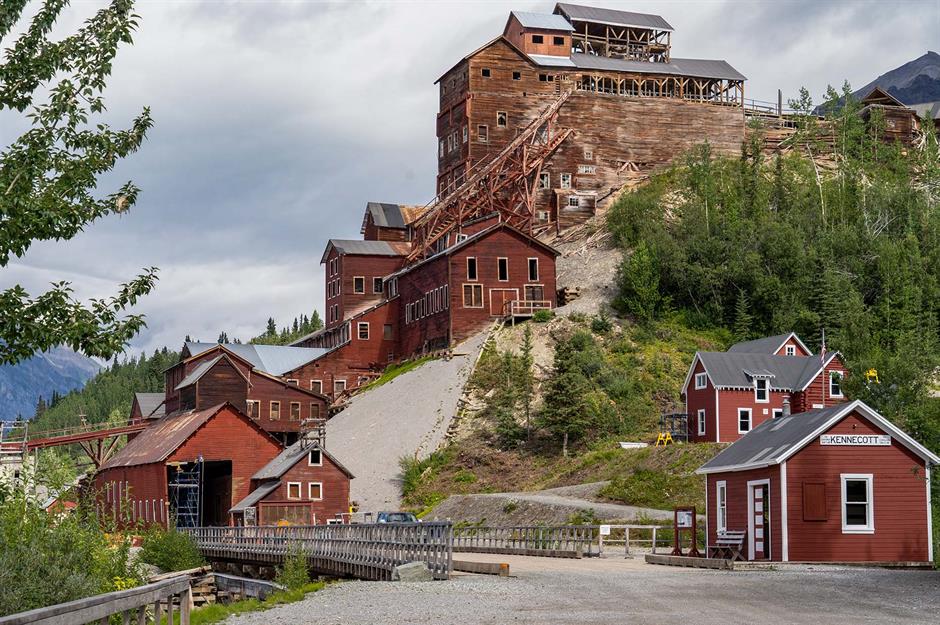
Kennecott was never really a town, but more of a mining camp in southeast Alaska. In 1901, mining students spent months sampling the soil and digging around Kennecott Glacier before determining it was possibly the richest copper site in the world.
Kennecott, Alaska
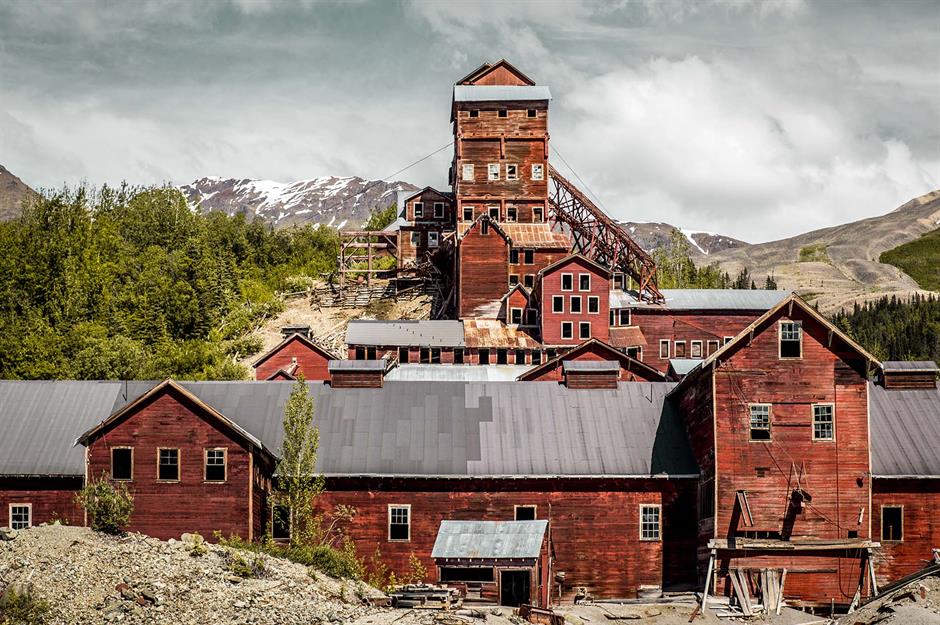
Between 1909 and 1938 Kennecott mines produced over 4.6 million tons of ore that contained $1.55 billion of copper. But by the late 1930s the mines were depleted, and the facilities abandoned. It has been a National Historic Landmark open to visitors since the 1980s.
Kennecott, Alaska
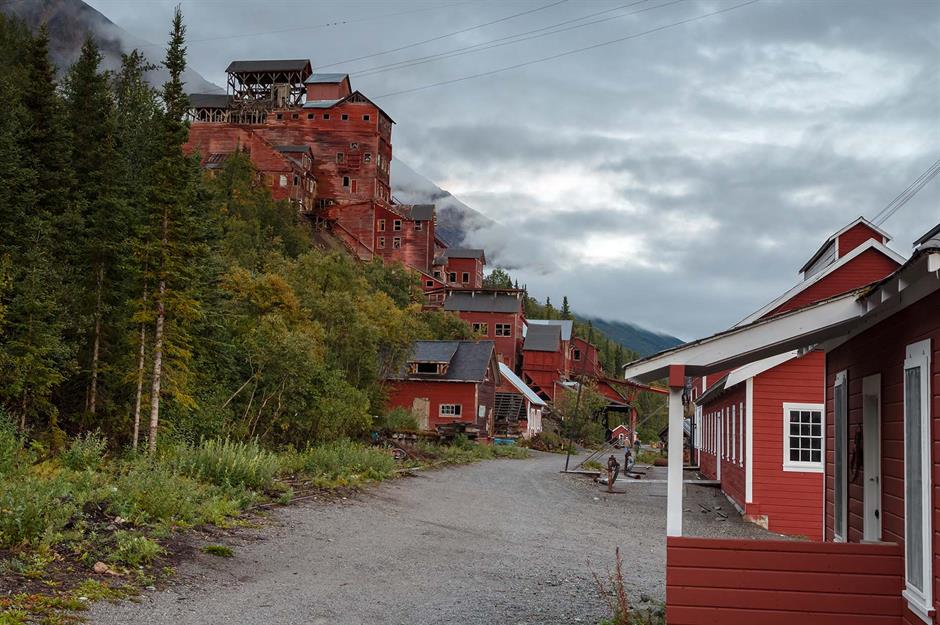
What survives of the old Kennecott Mine is otherworldly. High up in the mountains, the mill is perched on the edge of a cliff and the surrounding beauty is undeniable. Typically, there are various guided tours available and an organized expedition to the aptly named Erie Mine involves a breathtaking scramble around a cliffside and is definitely not for the faint-hearted.
Pearce, Arizona
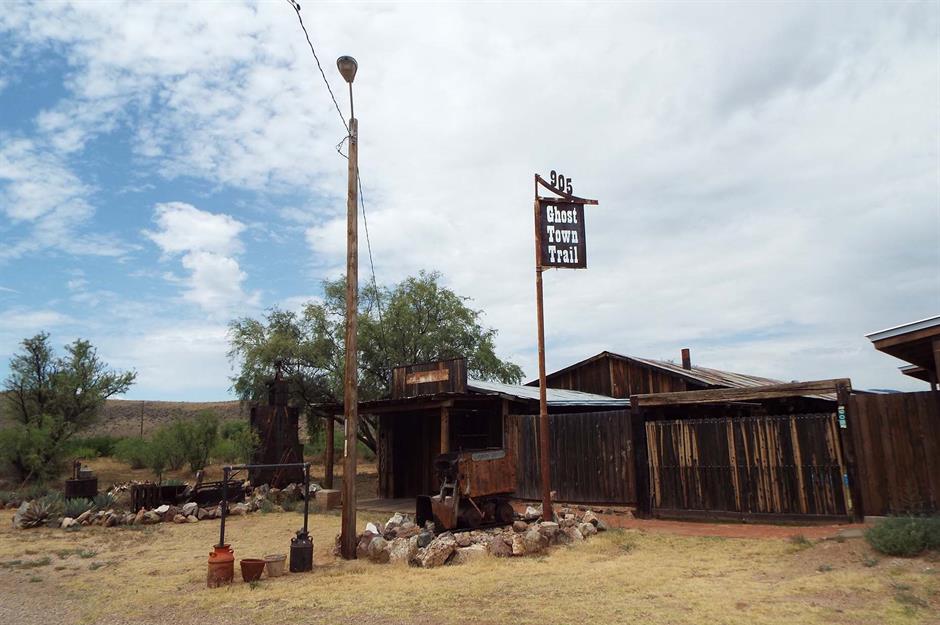
Cornishman James Pearce discovered gold in southern Arizona in 1894 and had a town named after him for his efforts. Today, Pearce is a ghost town, having been deserted when the mines finally closed in the 1940s.
Pearce, Arizona
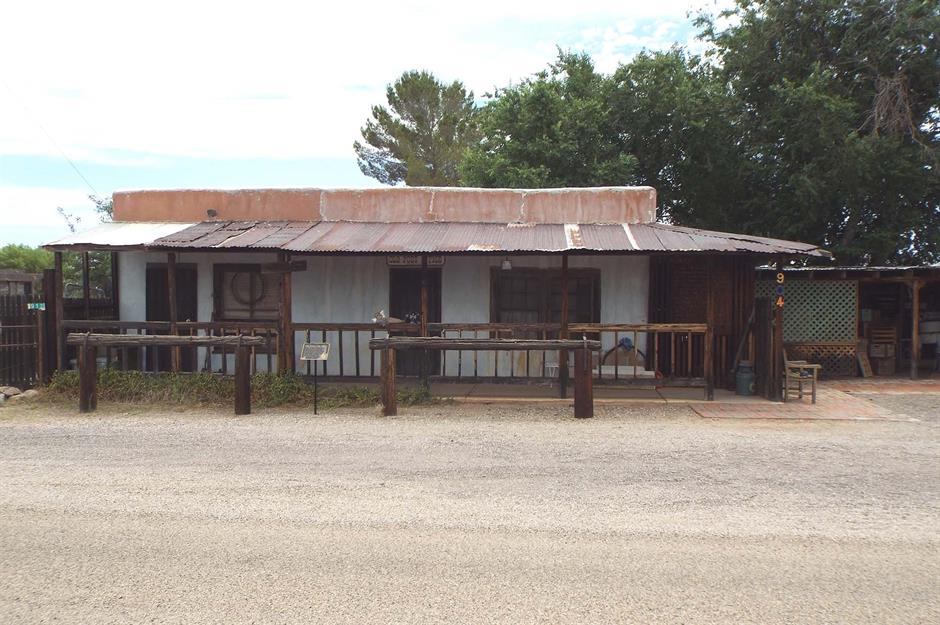
It was once a bustling place though with its own post office and a train station. The nearby mine produced about $8 million worth of silver and $2.5 million in gold between 1894 and 1940.
Today, the Pearce Post Office and the general store still stand, both of which are listed in the National Register of Historic Places for their cultural significance.
Pearce, Arizona
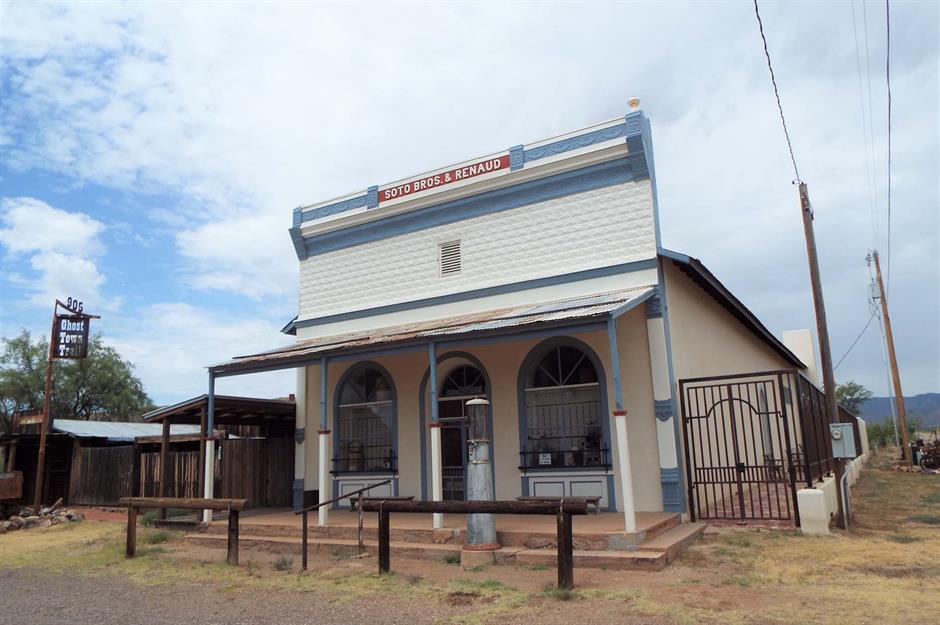
A fascinating place to visit, it's experienced a bit of a revival and some of the old buildings have been restored to reflect the look of the days gone by. Set in a very scarce desert landscape, it's only a stone’s throw from the Mexican border.
Rhyolite, Nevada

Around 120 miles northwest of Las Vegas high in the Bullfrog Hills is Nevada’s best-known Gold Rush ghost town, Rhyolite. Founded in 1905, it was one of several mining camps that popped up around the edges of the Death Valley as thousands of miners and prospectors arrived in the region following gold discovery.
Rhyolite, Nevada
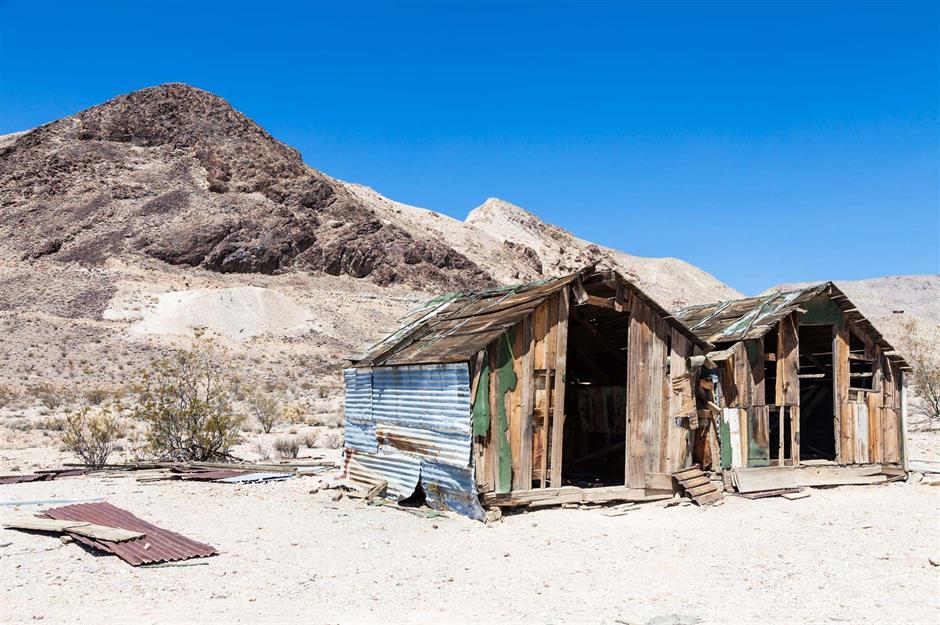
By 1907, Rhyolite had electric lights, water mains, a stock exchange, and a population of over 7,000. But several unfortunate events led to the downfall of Rhyolite.
The 1907 San Francisco earthquake and a financial panic later that same year made it too expensive to prospect for gold. By the end of 1910, the mine was operating at a loss and it closed in 1911. Rhyolite was entirely abandoned just nine years later.
Rhyolite, Nevada
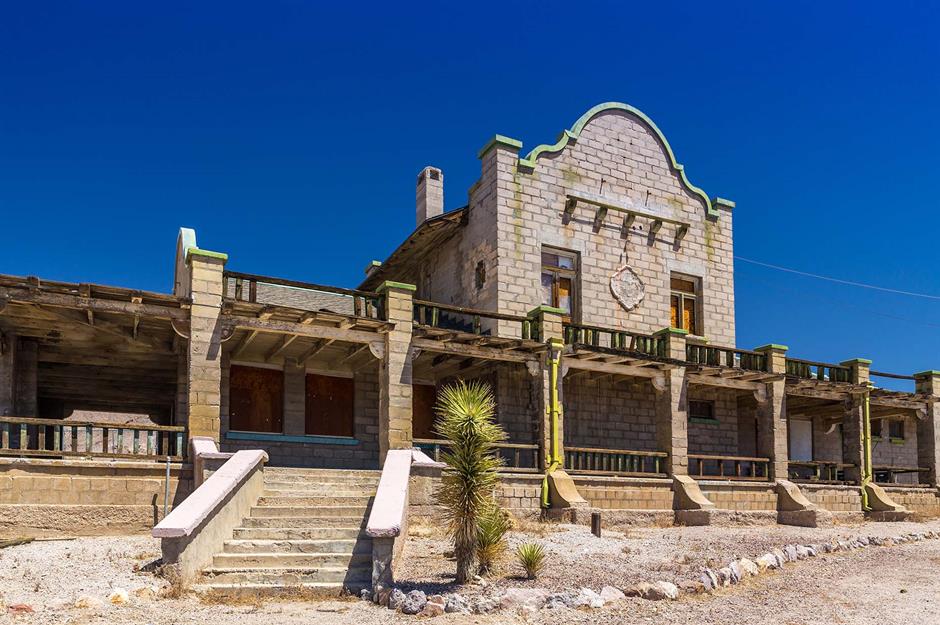
Today, it’s one of the most photographed ghost towns in the West. Ruins include a railroad depot and the Bottle House, which has thousands of bottles embedded into its walls like a mosaic.
The town has also served as a set for several Hollywood pictures like The Island and Six String Samurai. About a dozen buildings are still standing, including a general store, bank, jail, and train station.
Calico, California
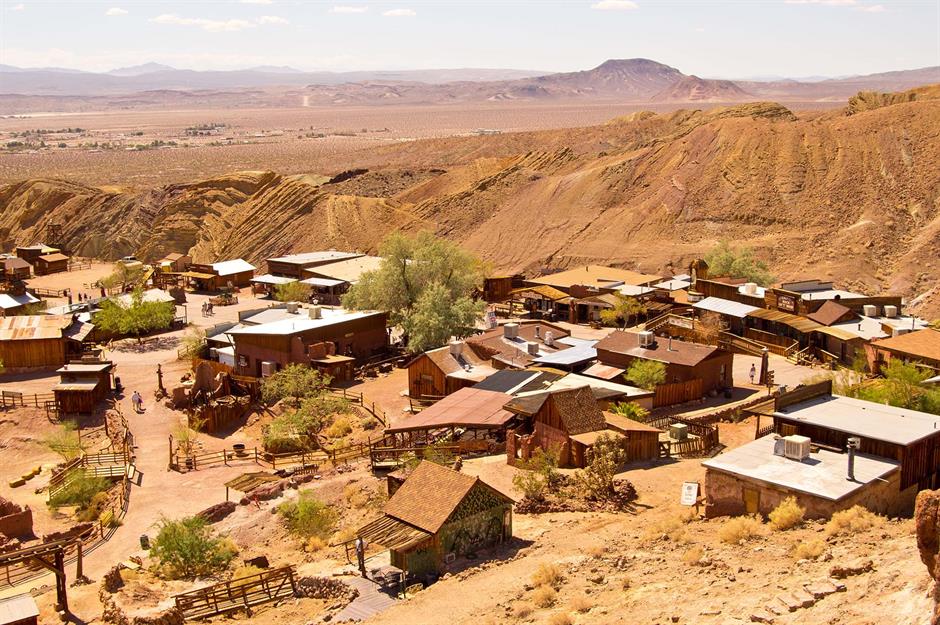
Unlike Bodie, Calico in California was a silver mining town. In fact, it was the largest silver mine in the whole state. By the late 1800s Calico had over 500 mines and a population of 3,500 people.
However, in 1896 the government decided to regulate the price of silver with the Silver Purchase Act. Overnight, the Calico mines became unprofitable and were shut down.
Calico, California
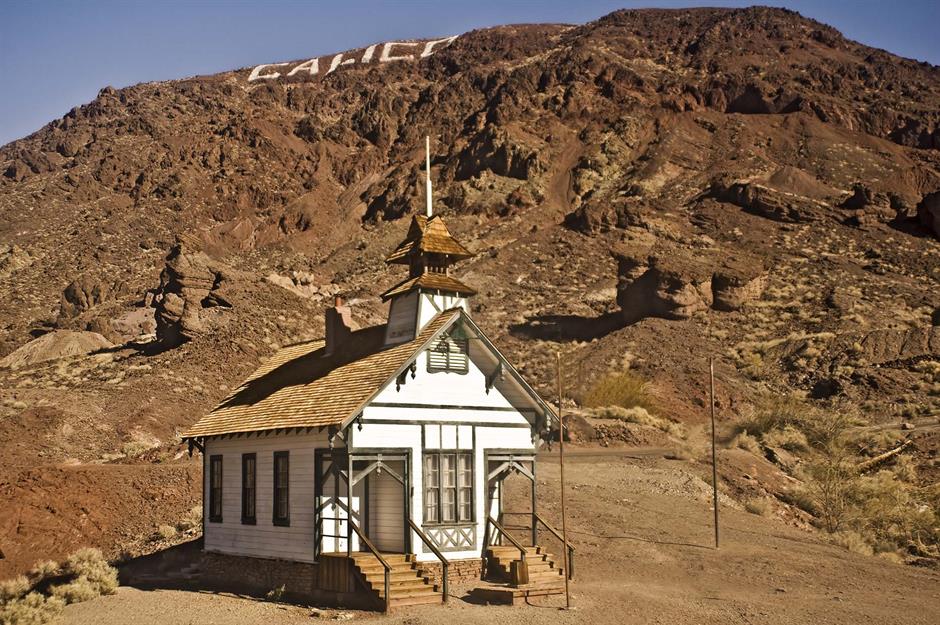
Calico has been a ghost town for over a hundred years now, since the last mine shut its doors in 1906. In the mid-1950s, the town was meticulously restored and converted into a regional park. Visitors today can experience ghost tours and gunfight stunt shows or board the historic narrow gauge Calico & Odessa Railroad train.
Calico, California

Calico is the quintessential Wild West mining town, and it’s easy to imagine gunslingers and sheriffs making their way into the town’s taverns and stores. Normally, it’s a popular destination with tourists in southern California, particularly around Halloween when Calico holds an annual Ghost Haunt.
Ruby, Arizona
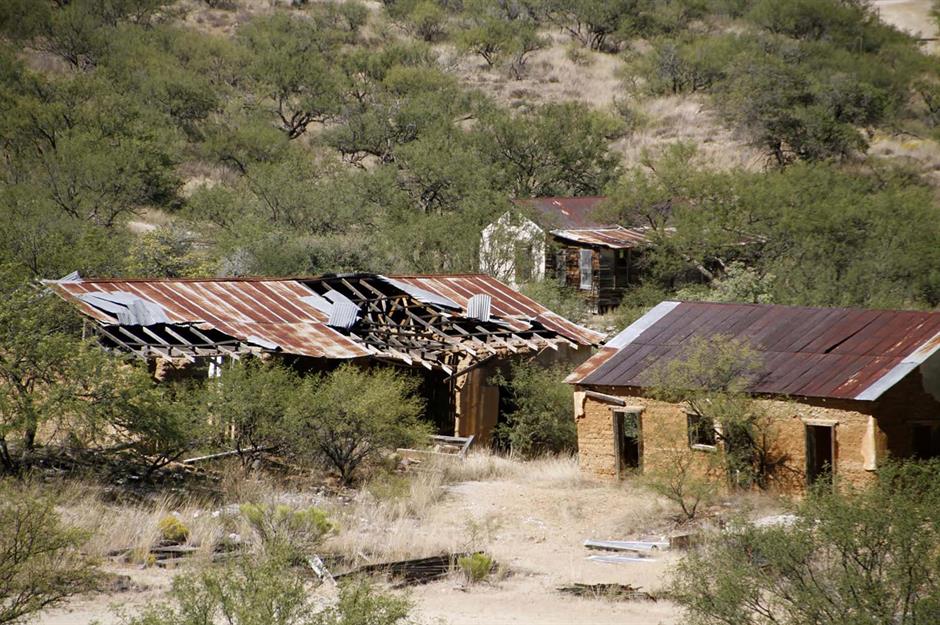
Four miles north of the Mexican border deep in the south of Arizona lies Ruby, surrounded by the Coronado National Forest in an area of rugged mountains, semi-arid deserts, and abundant wildlife. Once the largest mining camp in the region, now wild vegetation has invaded most of the buildings, making for an eerie site.
Ruby, Arizona
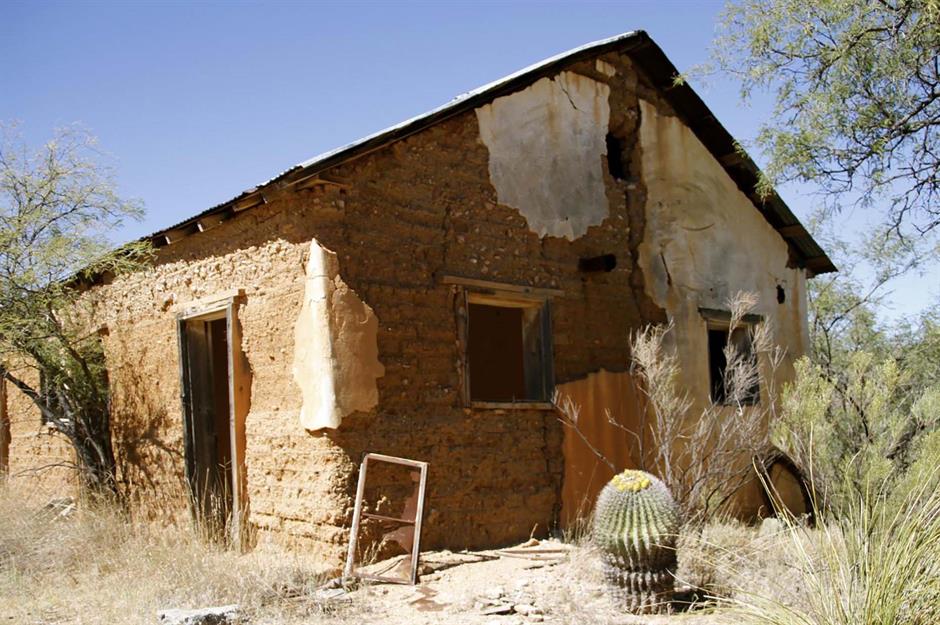
Ruby, despite its name, was famous for producing white gold, a fine and pale variation of the precious metal. It was first mined around Ruby in the 1860s, and the town survived into the 1940s, by which point the mines had closed and the workers and residents moved on.
Ruby, Arizona
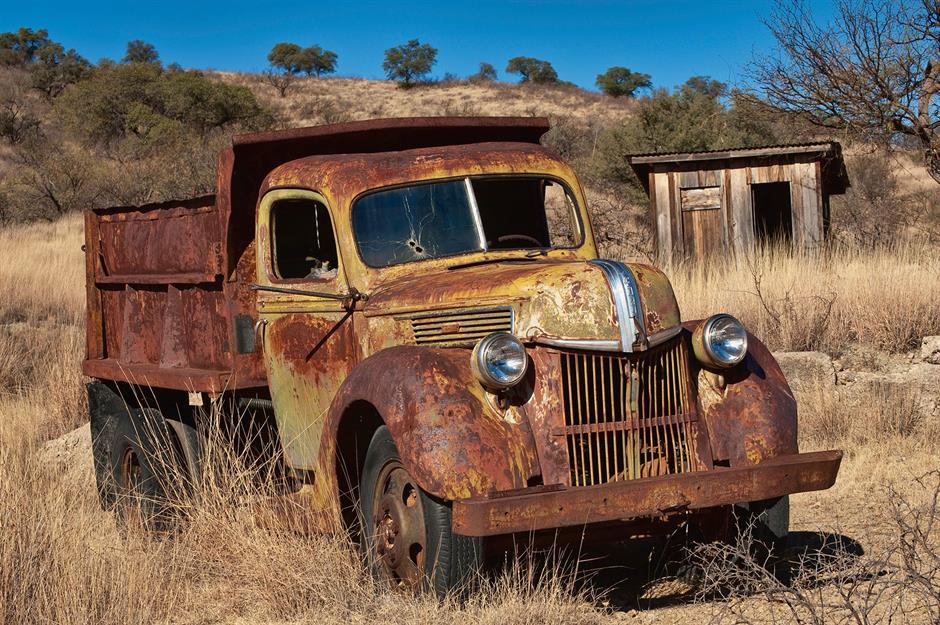
The miners and their families left behind their one-room school, a playground, and some homes. It’s possible to glean an impression of what life was like here at the turn of the century as you peek inside the lonely, abandoned buildings.
South Pass City, Wyoming
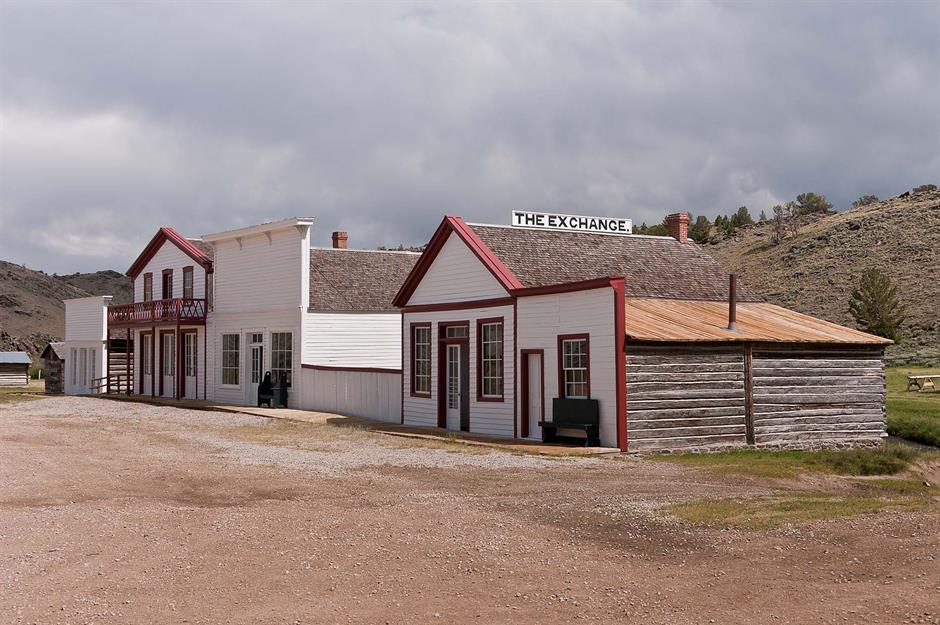
Thousands upon thousands of prospectors flocked to this desolate spot in central Wyoming, drawn by the promise of gold and riches. From 1868 to 1869 South Pass City was bustling with new arrivals, but the inclement weather of the South Pass and the back-breaking work required to extract scant amounts of gold meant the population dwindled as quickly as it had boomed.
South Pass City, Wyoming
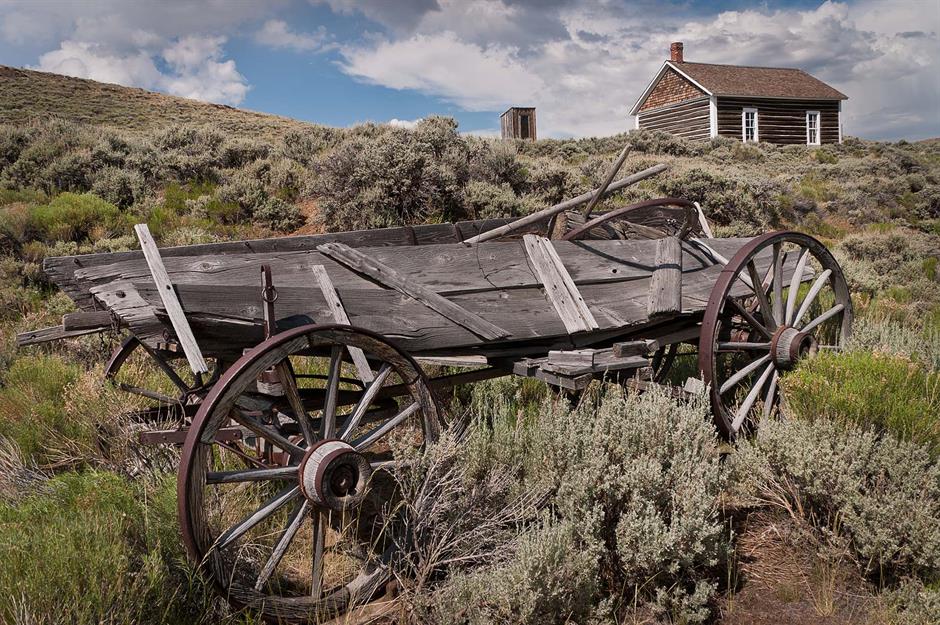
Today, South Pass City is one of the best-preserved ghost towns in the West. Most of the original buildings are still standing and it's even possible to tour the mine.
Normally, it's a popular destination, especially during Gold Rush Days in July, when the town holds re-enactments and visitors can experience what it was like to live in South Pass at the turn of the century.
South Pass City, Wyoming
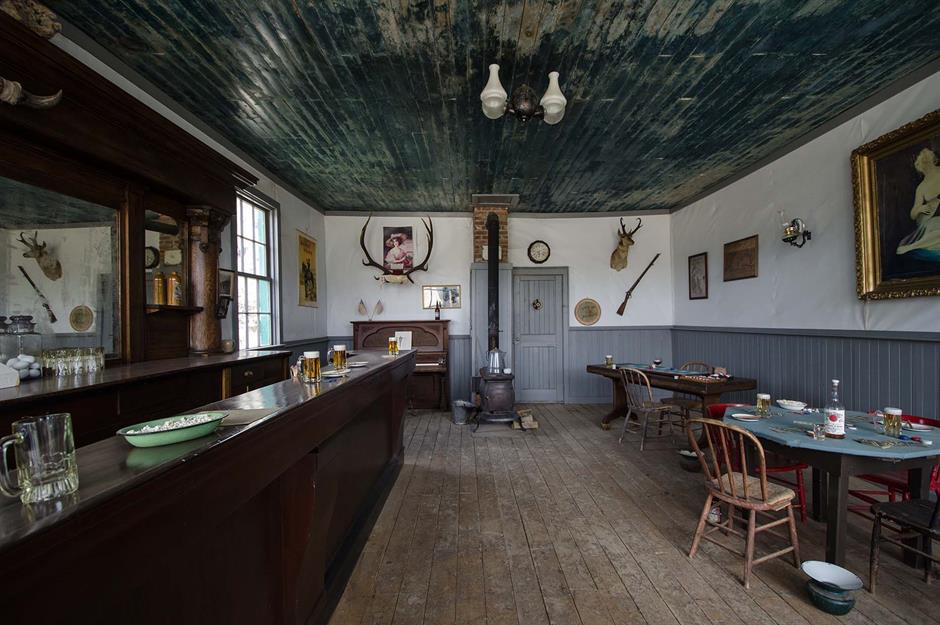
There are over 30 historical buildings to visit, all of which have been restored and made safe for visitors, however, South Pass City is still an unsettling place, haunted by howling winds. It’s extremely photogenic and visitors are rewarded with breathtaking landscapes.
Love this? Then take a look at Europe’s eeriest ghost towns
To
Coloma, California
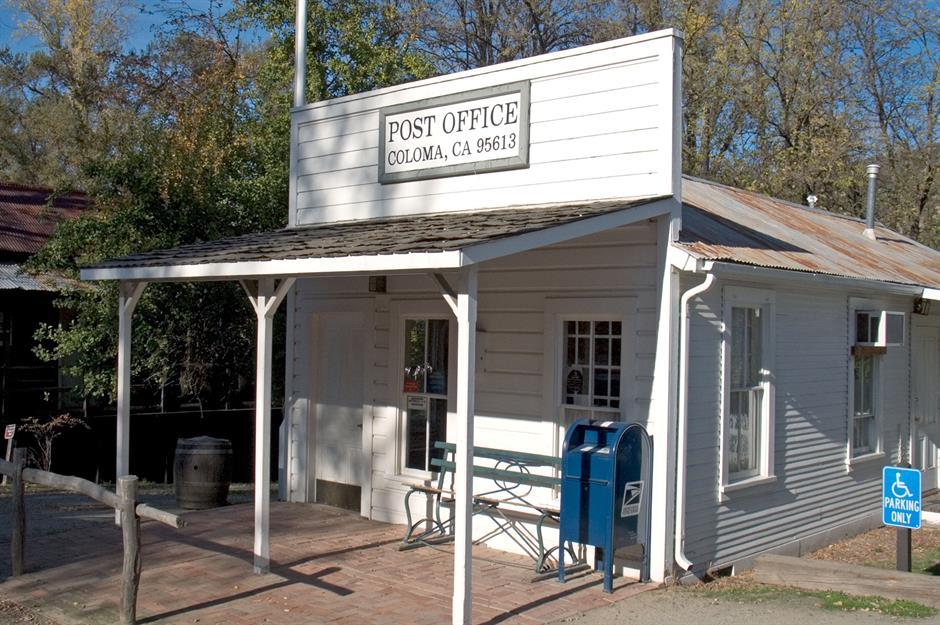
High in the Sierra Nevada mountains, Coloma – rather unusually – still has some residents left. The first vein of gold in California was found in Coloma when engineer James Wilson Marshall was developing a hydroelectric sawmill. The discovery triggered the California Gold Rush and put Coloma on the map forever.
Coloma, California

Between 1847 and 1852 Coloma was an important mining town, but as the gold subsided the population declined, and the town was abandoned. It is still possible to visit the old Sutter's Mill, where the first gold discovery was made and rumor has it there's still plenty of gold left in the hills.
Coloma, California
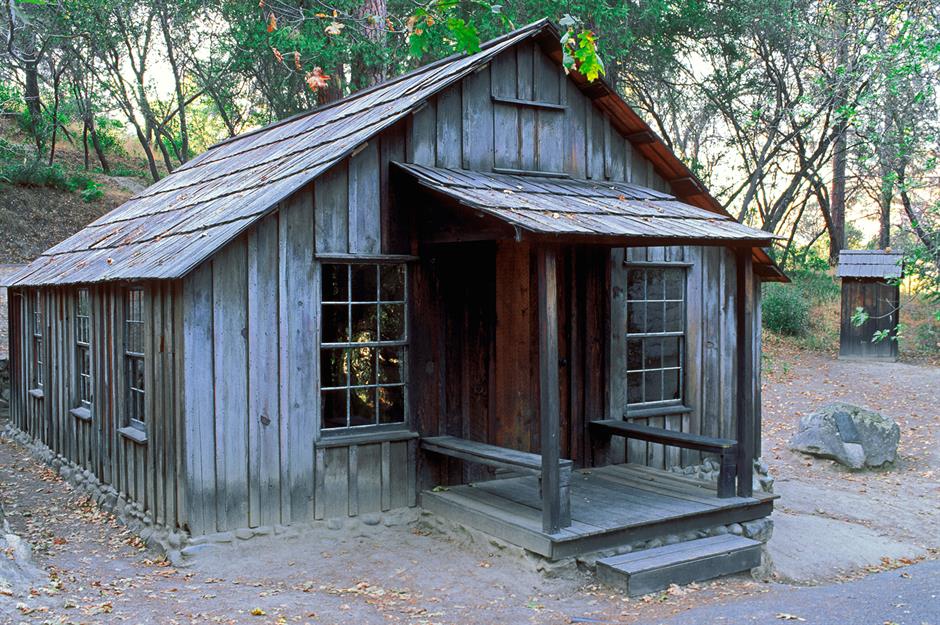
Today, Coloma is at the center of the Marshall Gold Discovery State Historic Park. Plenty of the old Gold Rush buildings are still around, including the post office and some of the abandoned miners’ huts. The park also has a museum, focusing on the California Gold Rush and there's even a chance to pan for gold at several locations in the park.
Virginia City, Nevada
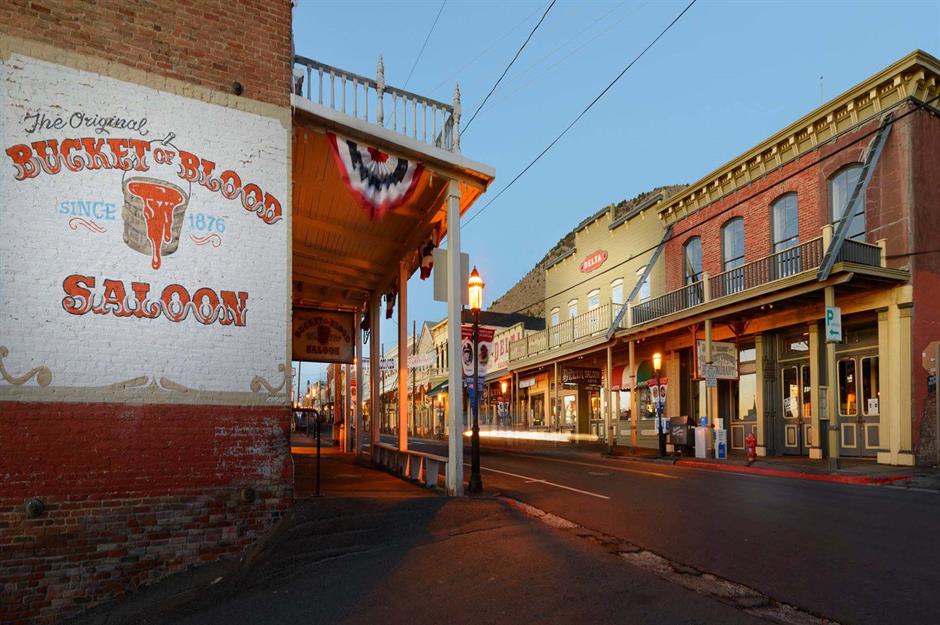
Virginia City was a boomtown which sprang into existence in 1859 after the discovery of a significant vein of silver in the Nevada Desert. At its peak in the mid-1870s it had around 25,000 residents. The mines' output dwindled after 1878 and the city itself declined as a result.
Virginia City, Nevada

Virginia City is surrounded by natural hot springs, which made the mines especially hot and dangerous. They were well-known among the local miners for the many perils.
However, the ghost town's main claim to fame is completely different: it was here that Samuel Clemens lived and worked as a journalist for two years, adopting the pen name Mark Twain.
Virginia City, Nevada
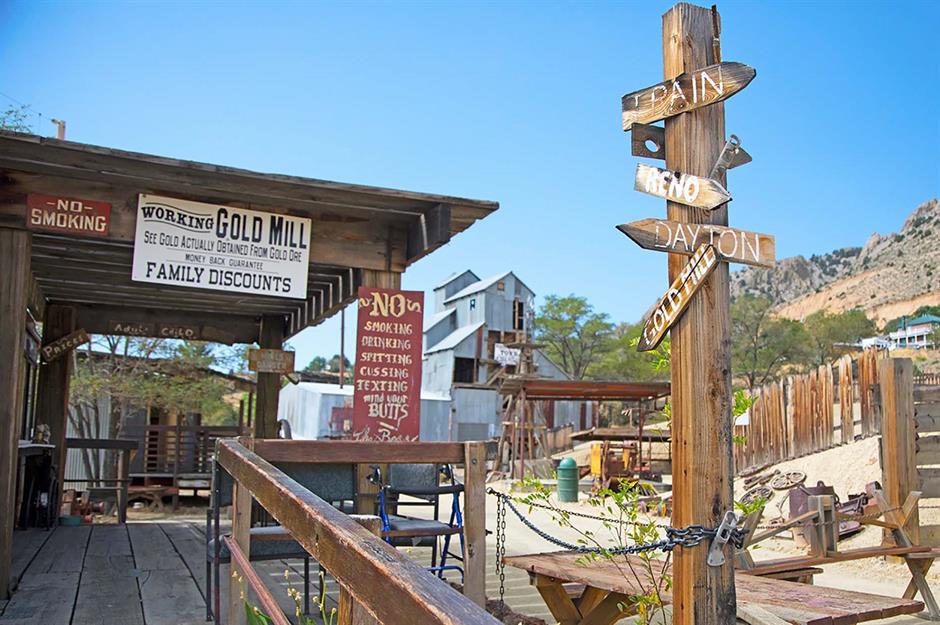
Virginia City has numerous restored buildings dating back to the late 19th century. Many of the saloons, stores, and even hotels were reopened to cater to visitors and are still lovingly maintained in accordance with their original style.
Though it’s a Gold Rush-era town, it's typically very much alive with a handful of residents and the many visitors that would normally walk its streets every year.
Midas, Nevada

Everywhere the prospectors dug, they struck gold in and around Midas so soon a hotel, saloon, shops, and even a newspaper were established in the town.
However, its popularity was short lived as the area didn’t have enough stamp mills to support all the gold ore production. The 250 residents left Midas within the same year they had arrived.
Midas, Nevada
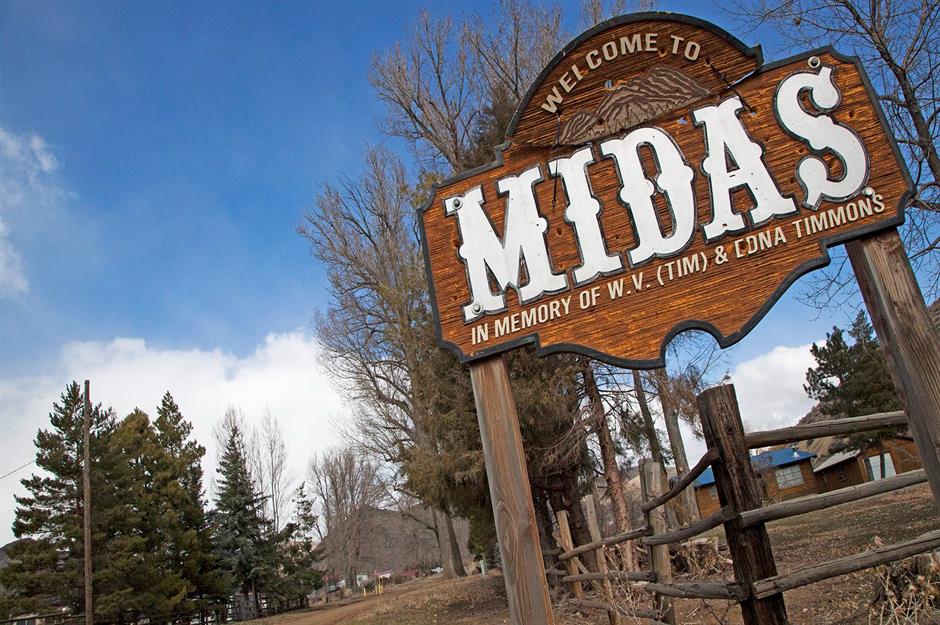
Midas was never entirely abandoned and wasn’t connected to electricity until 1989. Today, around a dozen full-time residents remain, preserving the spirit of the historic gold rush town.
Gold Point, Nevada

Founded as a silver mining camp in the early 1960s, Gold Point was once a busy town with 125 houses, hotels, saloons, a bakery, and a post office.
Even though it was known as Lime Point and Hornsilver at various points in history, the name Gold Point is the one that stuck. When World War II began, the government ordered all gold mines to be shut down and as mining ceased, residents moved away.
Gold Point, Nevada

Nowadays, visitors can explore Gold Point’s history thanks to two men who own most of the town’s buildings. Herb Robbins and Walt Kremin bought the remains in the late 1970s and in early 1981, refurbished them and made them available for people to visit.
Ione, Nevada
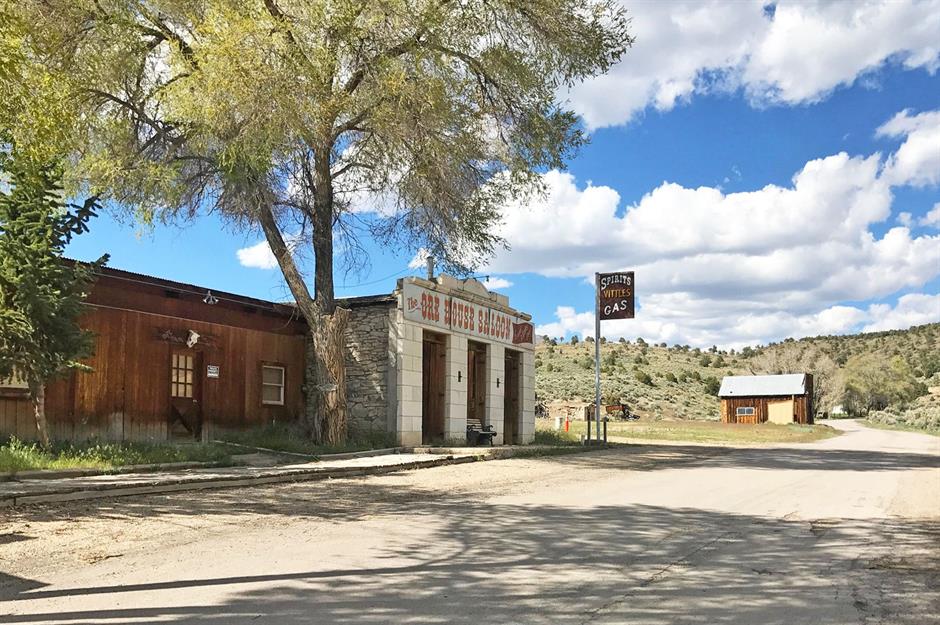
When silver was discovered in the nearby Shoshone Mountain Range a wave of people started to settle in Ione. Founded in 1863, this established the town as a trade and milling center and it even became the seat of Nye County.
The town was also home to the county’s first courthouse, which you can still explore today. However, as another town called Belmont was becoming more popular, the gold rush town lost most of its population and its country seat. Even though Ione had small booms in 1986 and again in 1912, they weren’t long lived.
Ione, Nevada

Today, the small town prides itself as ‘the town that refused to die’ and still has a population of around 41. However, with the exception of one market, all the businesses closed in Ione with the post office being the last one to shutter in 1959.
Comments
Be the first to comment
Do you want to comment on this article? You need to be signed in for this feature